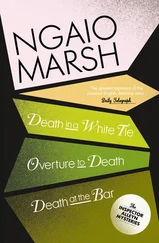Tuta Korota arrived at Tika’s house on a Friday night, shortly before midnight. Tika described it:
Tuta Korota sat in the eastern corner facing west, I sat with my mother and sisters around her. We placed cloth, potatoes, oca, and coca leaves in a bundle, tawichu, a woman like us. Tuta Korota was a wizard of the wind also. She purified us with incense and asked permission of the wind [ Wayra ] to perform the ritual by throwing aqha [ chichal corn beer] into the air so that Wayra could carry it “to where Wayra blows.”
Wayra had supposedly brought chuyma usu to Tika, and, in retaliation, Tuta Korota poured another cup of chicha for the community wind. She passed this cup over Tika’s and her matrilineal relatives’ heads and went into the courtyard to throw it into the wind. This toast was to ensure that the wind of those who cursed Tika would be destroyed.
Wayra has two aspects: it serves as a metaphorical vehicle for cursing people, and it also brings the rain clouds to wash away sicknessto remove the chijekuna (invisible troublesome substances) within Tika and to dispose of them within the river. The wind’s two climatic properties parallel the river’s two relationships to the mountain as both erosive and cyclical. As Andean etiology parallels telluric forces of nature, so too Andean ethnomedicine symbolically serves these forces (see Bastien 1978, 1985, 1987a, 1992). Tika continued:
Tuta Korota laid a wayllasa [ritual cloth] between us. She laid a rat at the head of wayllasa and sorted out twenty wads of dark llama wool. Mamay [my mother] brought coca leaves from Cabildo [shrine of patio] and Capilla [Chapel]. Tuta Korota put slivers of llama fat on the coca, saying, “Here’s some food for the rats and mice.” Tuta Korota also served daisies, seeds, herb clumps, and moss. The wads were wrapped to the rat’s back and two wads were given to each of us. Tuta Korota rubbed me with the wads, demanding, “ Chijekuna purijchej! Chijekuna purijchej! Chijekuna purijchej!” [Be gone!]…
Tika traveled with Tuta Korota and her relatives to the river to wash themselves and to expel the inner fluids contaminating her. Tuta Korota dispelled Tika’s misfortunes [ chijekuna ] into the river to be washed away, as Tika narrated it:
…I put one wad in my sandal and the other inside my headband. We filed out the front gate into the mud and rain. Everyone carried a large pack of dirty clothes to wash in the river. We stumbled along in the dark. Tatay [my father] led. Tuta Korota followed. She was old but kept up with us.
…we arrived at the Kunochayuh River and climbed another steep path up the mountain. Tatay showed me a cave alongside the river. “This goes to the Uma Pacha [place of origin and return]” he explained. “It is where we feed our ancestors.”
…Tatay built a small fire inside the cave. Tuta Korota placed one wad in each of my hands. I prayed to Mayu and asked her to remove the chijekuna within my chuyma. I knelt facing the river’s descent. Tuta Korota threw the yolk and white from a duck egg into the water, and then she removed the black wads from my headband and sandal. She broke wool threads around my right and left hands and right and left feet. She put the black wads into an old coca cloth with guinea pigs, rat, coca quids, and ashes. Everyone looked away, as Tuta Korota flung the cloth into the river, saying, “Puriychej chijekuna! Puriychej chijekuna! Puriychej chijekuna” [“Begone Invisible substance!”]
As is the case in other Andean misfortune rituals, the participants entered the icy waters to cleanse their bodies and then returned home. Tuta Korota revealed that sickness was related to corporeal, social, and geographical entities and that the human body in its constitution and dissolution is related to similar factors within the environment. In a sense, every symbol in the ritual suggested returning the misfortune to its place in nature. In a symbolic way, this could be seen as the desired return of vinchucas and T. cruzi to their forest environments.
The misfortune ritual is far removed from the microscopic view of the disease of the paleopathologists who examined Tika’s Inca ancestors. The former found wind, river, and earth; the latter found nests of amastigotes of Trypanosoma cruzi within human tissue. Neither perspective presents an entirely complete picture of Chagas’ disease. Andean ritual symbolically and spiritually adds to microbiology by metaphorically reversing the microscope and seeing the broader context.
Interpreting Symptoms and Locating Causality
Jampiris and yachajs symbolically interpret symptoms of Chagas’ disease and refer to natural deities that have hidden power over our bodies (an apt image for T. cruzi ). They rarely refer to disease entities, instead referring mostly to symptoms, which they reinterpret for specific purposes such as to perform a ritual, redress a conflict, or produce a male offspring. Chagas’ disease lends itself to multiple interpretations because of its unclear and varied symptomology, being difficult to diagnose even clinically without laboratory tests by doctors.
After the Bolivian national Chagas’ campaign began in 1991, educational programs educated the rural peasantry concerning the danger of Chagas’ disease and its parasitic cycle relating to vinchuca bugs. Reeducation campaigns strongly push for the destruction of vinchucas by insecticides and housing improvement. Problems exist. Although not publicly endorsed, the insecticide DDT is used. Housing improvement generally is too expensive for poor peasants. Motivation also is low because the relationship of parasites to vectors and hosts is incomprehensible to many peasants, who find it difficult to connect Chagas’ disease to a bug bite years before. (On the other hand, malaria offers little problem in that regard, with its rapid attacks following infection.)
A concern of biomedical ethics is to what degree Western scientists should impose their medical paradigms upon natives and disrupt their cultural systems of dealing with infirmities. Western scientists claim a privileged sense of truth in regard to health questions, but Andeans prefer not to see Chagas’ disease in terms of “biological warfare” or “us versus them.” In the rich biota of the Andes and Amazon, insects play a vital role, and, as any camba (lowlander) will tell you, “the ant is the king of the jungle, and one has to respect them and learn to live with them.”
Jampiris and yachajs are little concerned with clinical definitions of Chagas’ disease, fearing that such classifications relegate the discourse to doctors. They recognize the loss of their patients to medical doctors, and only rarely do doctors refer patients to curanderos. Moreover, Jampiris and yachajs fear that doctors could prohibit their practices. Jampiris and yachajs also do not refer patients with Chagas’ disease to doctors, because doctors and drugs are expensive and they cannot cure Chagas’ chronic forms. Doctors, however, can learn from jampiris and yachajs how to better diagnose the symptoms of Chagas’ disease, something which has potential for the disease’s prevention (see Chapter 10).
Jampiris andyachajs always consult coca leaves to interpret the symptoms of Chagas’ disease. Some examples of how jampiris and yachajs interpret the symptoms of Chagas’ disease follow. An enlarged heart is particularly meaningful to them as chuyma usu (heart sickness), possibly caused by a death, unrequited love, slapping a mother-in-law, or indigestion. Kallawaya diviners throw and “read” coca leaves to uncover hidden causes for chuyma usu. A simple parasitic explanation does not satisfy Andeans’ desires for semiotically rich interpretations of ailments. Inability to swallow might refer to fears and anxieties over some bad deed or, as a worse scenario, that the sufferer told a devastating tale. For typhoid fever, as another example, the coca leaves once read that I was the cause because I had given sugar to a neighbor who was an enemy of the family with whom I lived (Bastien 1978).
Читать дальше












